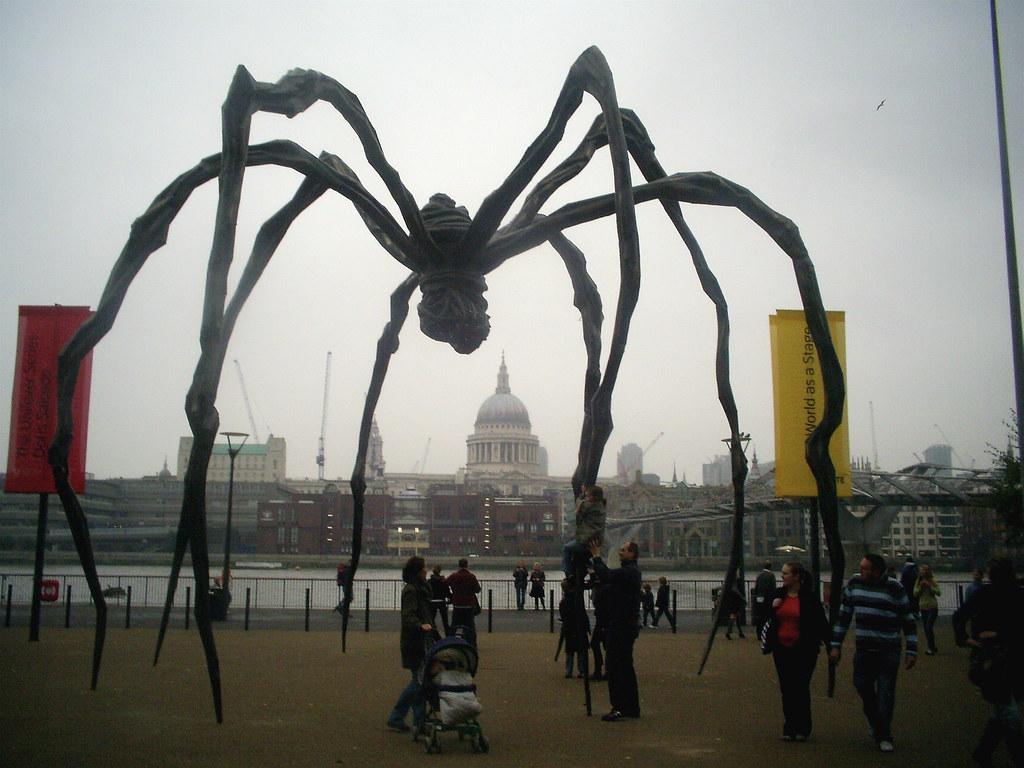13.3: Sculptures
- Last updated
- Save as PDF
- Page ID
- 64739
|
Sculptor |
Country |
Usual Medium |
|---|---|---|
|
Auguste Rodin |
France |
Bronze |
|
Henry Moore |
England |
Bronze, cast fiberglass |
|
Alexander Calder |
United States |
Metal |
|
Ellen Neel |
Canada |
Wood |
|
Gaston Lachaise |
United States |
Bronze |
|
Isamu Noguchi |
United States |
Steel |
|
George Segal |
United States |
Bronze |
|
Käthy Kollwitz |
Germany |
Bronze |
|
Elizabeth Catlett |
United States |
Bronze |
|
Maya Lin |
United States |
Granite |
|
Louise Bourgeois |
France, United States |
Multimedia |
Modern sculpture brought about a considerable change in art as it deviated from the classical forms, leaving artists to explore and diverge from the Renaissance period. Many of the early 20th century modern sculptors were able to create as they desired and experiment, redefining sculpture, instilling the freedom to use modern materials and modern ideologies of design. Modern sculpture is considered to have started with the work of the French sculptor, Auguste Rodin (1840-1917). Opting to forgo the traditional, classical themes of allegory or mythology, Rodin shaped the human body with exceptional realism, physicality, and personality.
The Thinker (13.23) was perhaps Rodin’s most famous work, known around the world as the classic symbol of a man deep in thought. The work is a nude male figure sitting on a rock cast from bronze about 186 centimeters high. The raw muscular body is portrayed with his head lowered onto his hand, struggling to comprehend the human condition, trying to understand how thought and reason impact the world. Twenty-eight full-size bronze castings are located in museums around the world. The Burghers of Calais (13.24) was based on the long war between England and France, the burghers surrendering and expecting death. Their feet are oversized as though still wanting to be anchored in this world, their hats removed, and ropes hung from their necks. The lives of the bronze figures illustrated in the emotional sculpture were eventually spared.
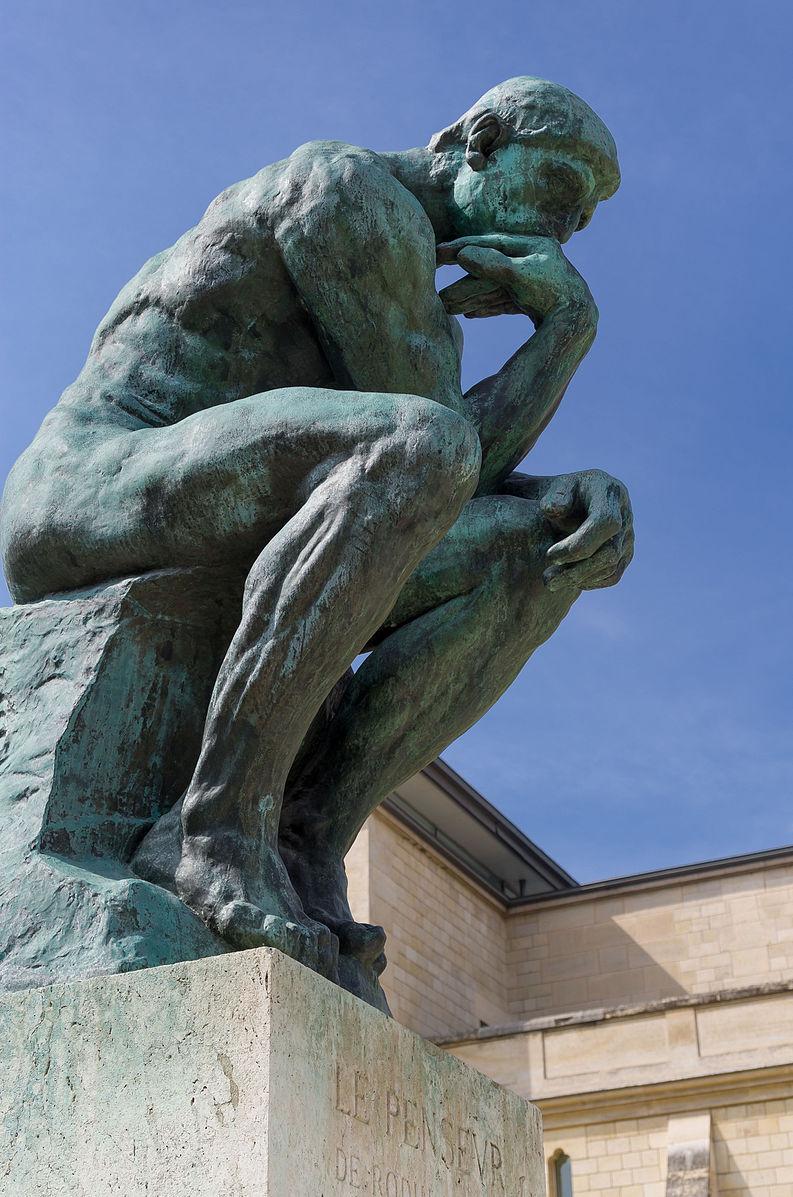
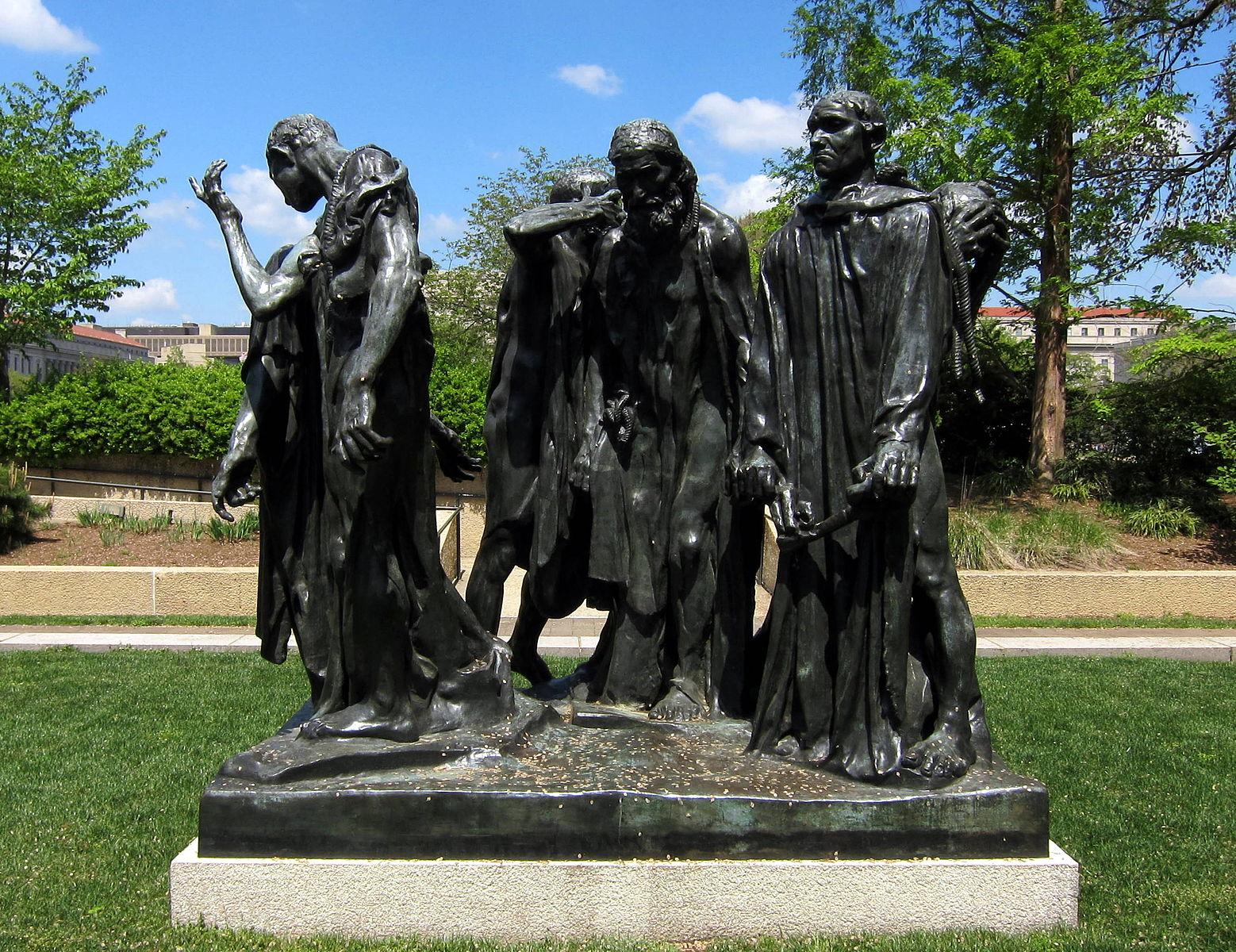
A semi-abstract English sculptor and artist Henry Spencer Moore (1898 –1986) created monumental bronze sculptures located around the world, designated as public works of art. Draped Seated Figure (13.26) is a whimsical, bronze abstracted human form of a woman in a reclining position. Moore was greatly influenced by the Chac Mool (13.25) stone at Chichen Itza on the Yucatan Peninsula. The reclining figure was a common theme in many of Moore's work and became more stylized, as demonstrated in the fiberglass version Reclining Figure (13.27).
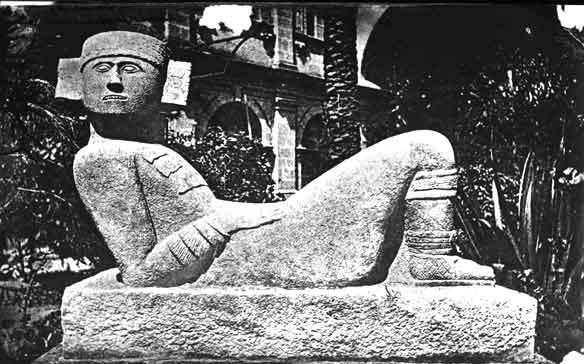
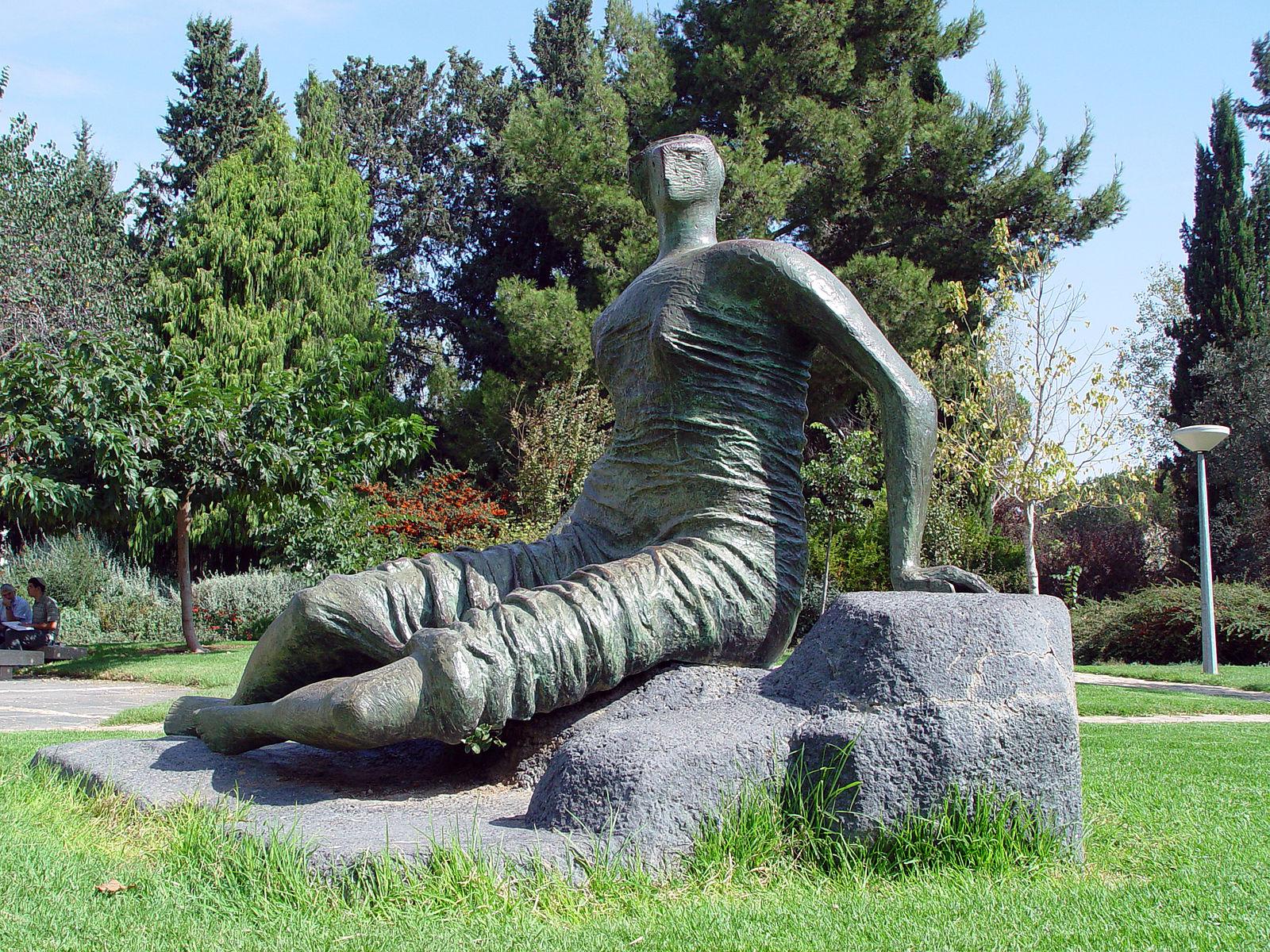
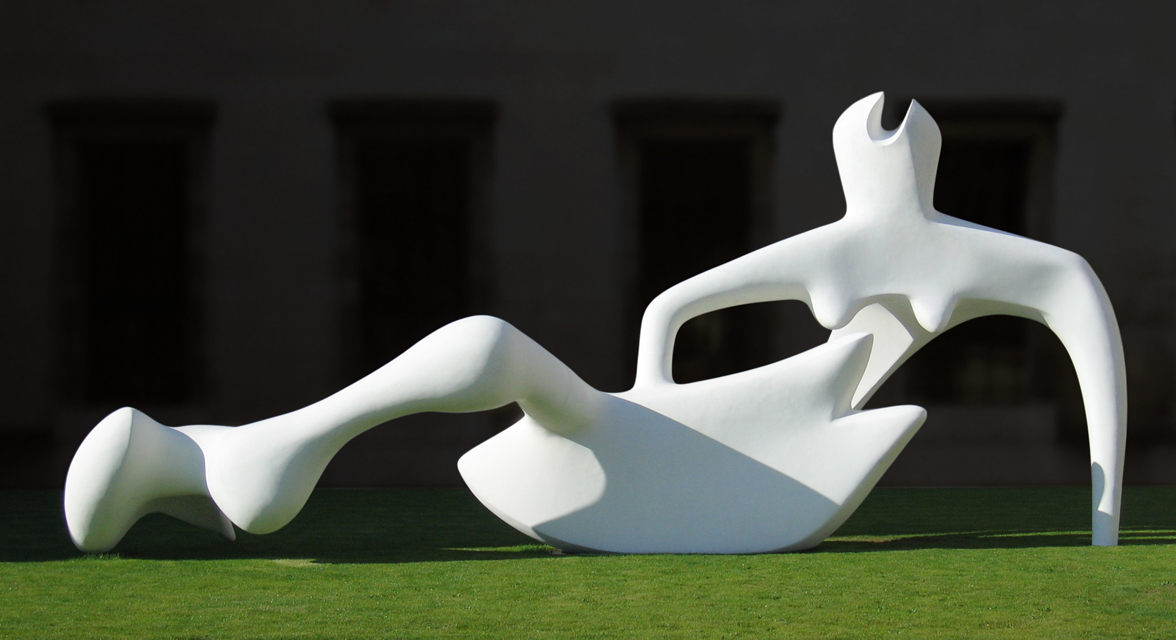
“My whole theory about art is the disparity that exists between form, masses, and movement.” [1]
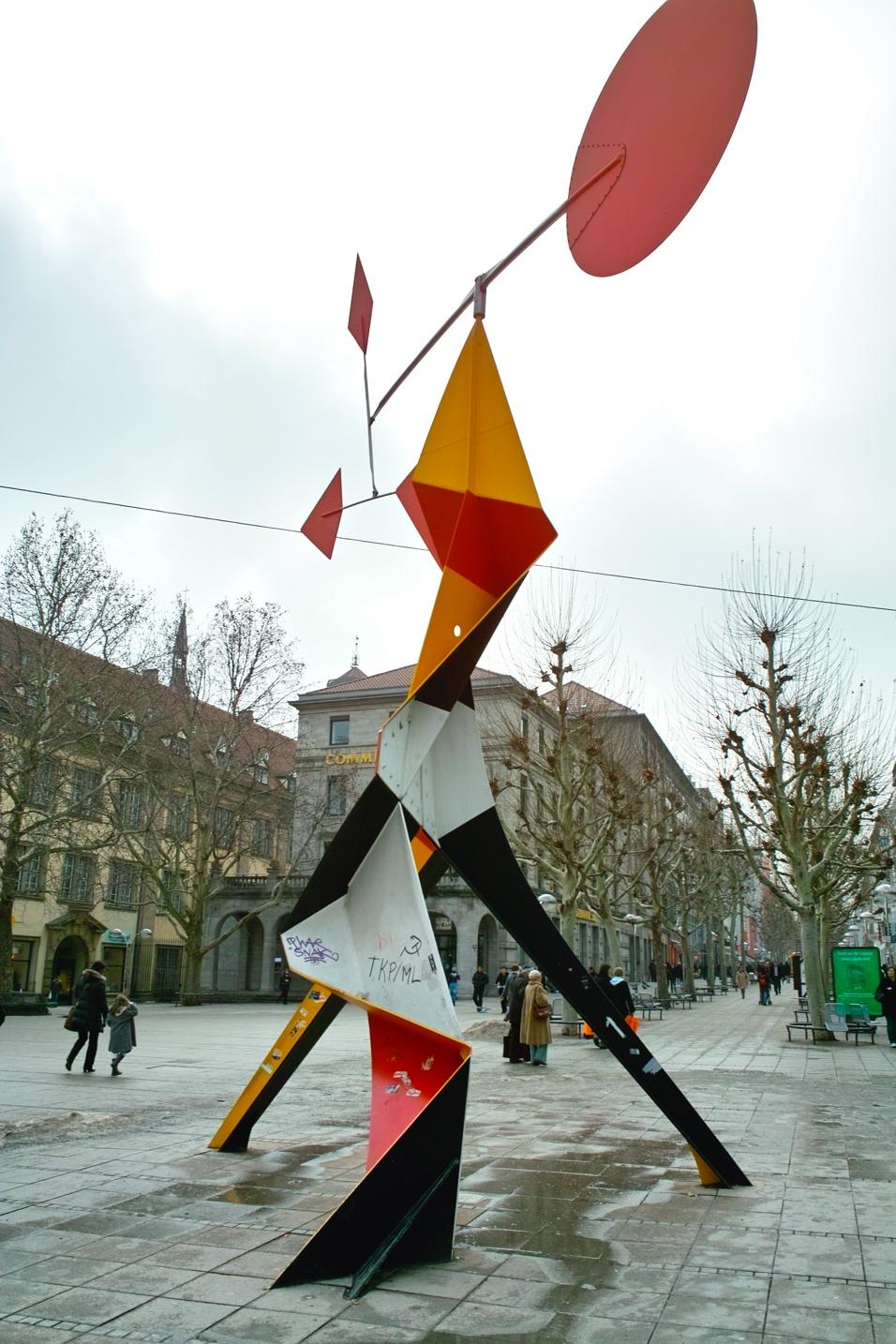
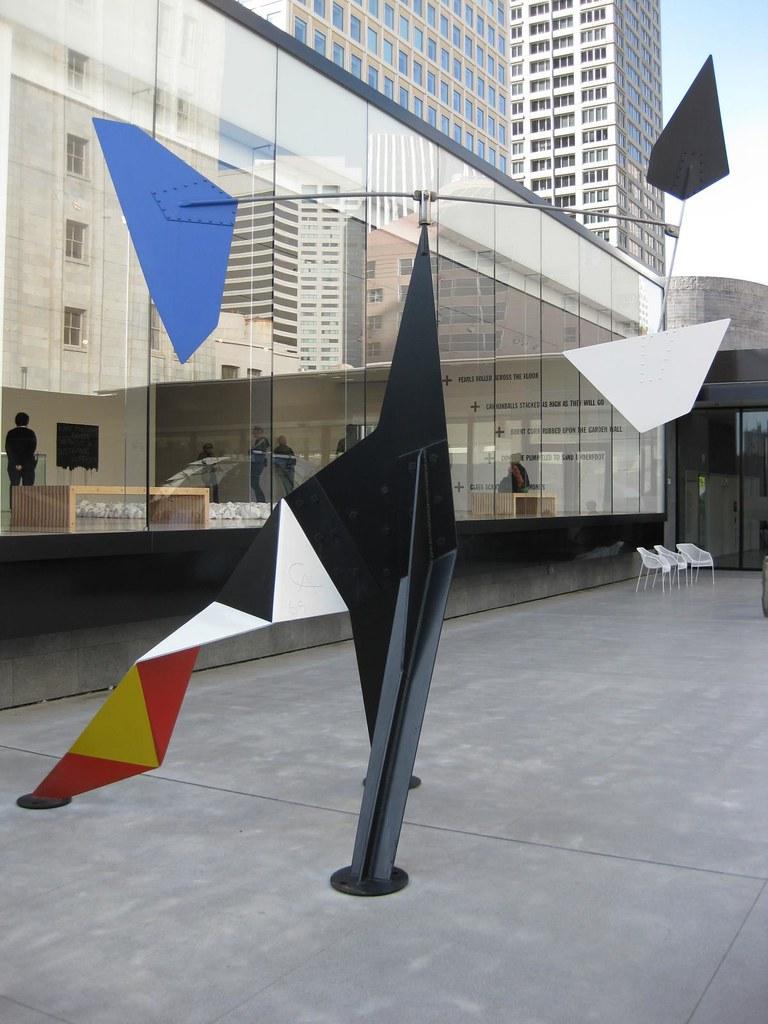
Using modern materials like painted sheet metal and metal rods, the American artist Alexander Calder (1898 –1976), who was initially trained as an engineer, was the originator of the kinetic mobile. Responding only to air currents, the mobiles were delicately balanced or suspended, creating movable sculptures (13.28), (13.29). Caldor's bold use of color in his sculptures and engineering requirements for balance give his art a unique appearance. Some of his mobiles made a sound, others moved in the wind, and several were large static sculptures (13.30).
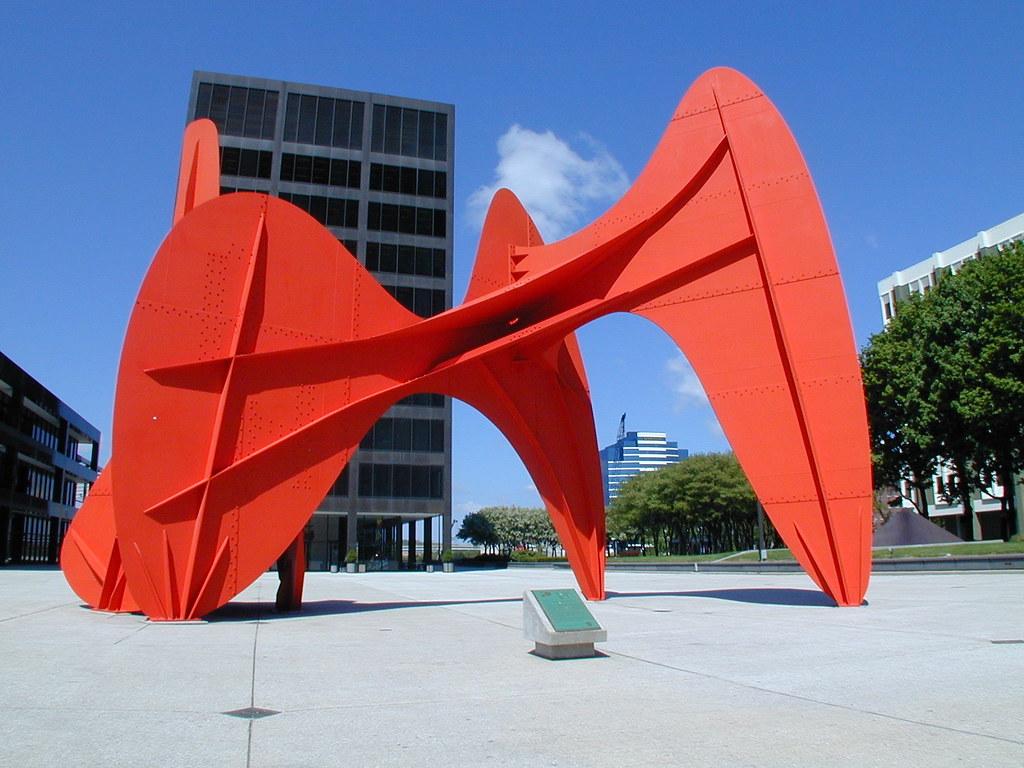
The first known woman to carve totem poles professionally was sculptor Ellen Neel (1916–1966), a Kwakwaka’wakw artist from British Columbia. Learning Northwest carving from her maternal grandfather, she started out carving small totems to sell, becoming successful enough to carve larger poles. Art of the Kwakwaka’wakw is similar to other northwestern art, but deeper cuts are made in the wood on the totem. Paint is used to emphasize a figure or motif, and the addition of beaks and wings for pieces on the front and sides, protrude outward, giving the sense of a flying bird.
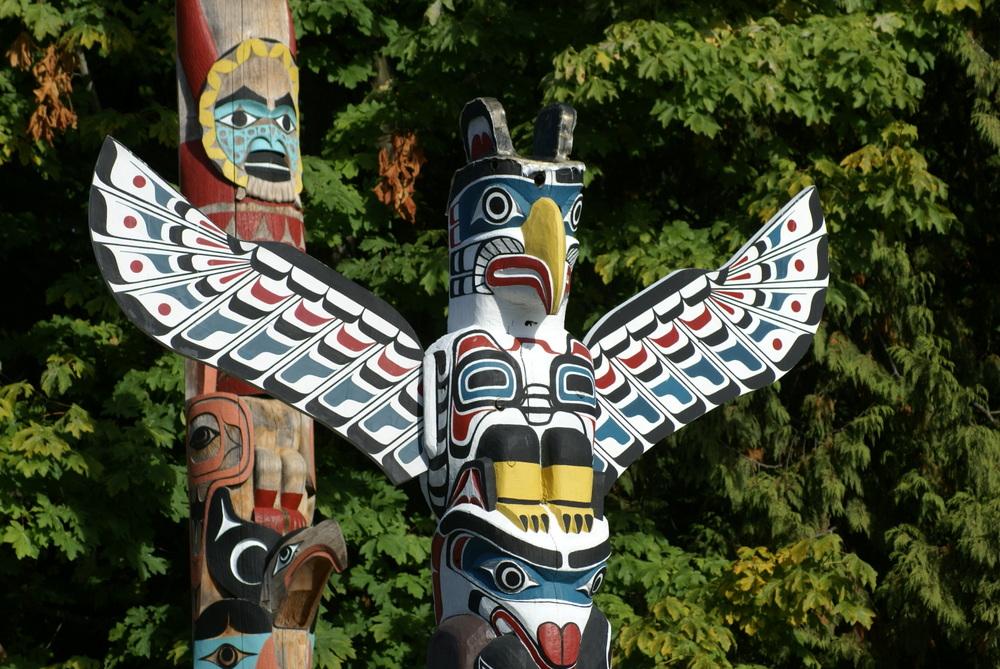
Neel probably used western red cedar for the more towering totems, an abundant and sizeable tree in the American Northwest. Yellow cedar trees were generally used for smaller projects. Totem poles were placed outside the house and used to display information about the family, while other totem poles might be used as welcome poles, memorial poles, or shaming poles. Each of the symbols, carvings, and paintings had particular meaning. The top of the pole displays the broadly curved eagle’s beak (13.31), a raven would have a straight beak, the beaver incised with large front teeth. The figures carved on the pole (13.32) were intertwined, connected by symbolic meanings. Some of Neel’s totem poles are displayed in Stanley Park as well as museums.
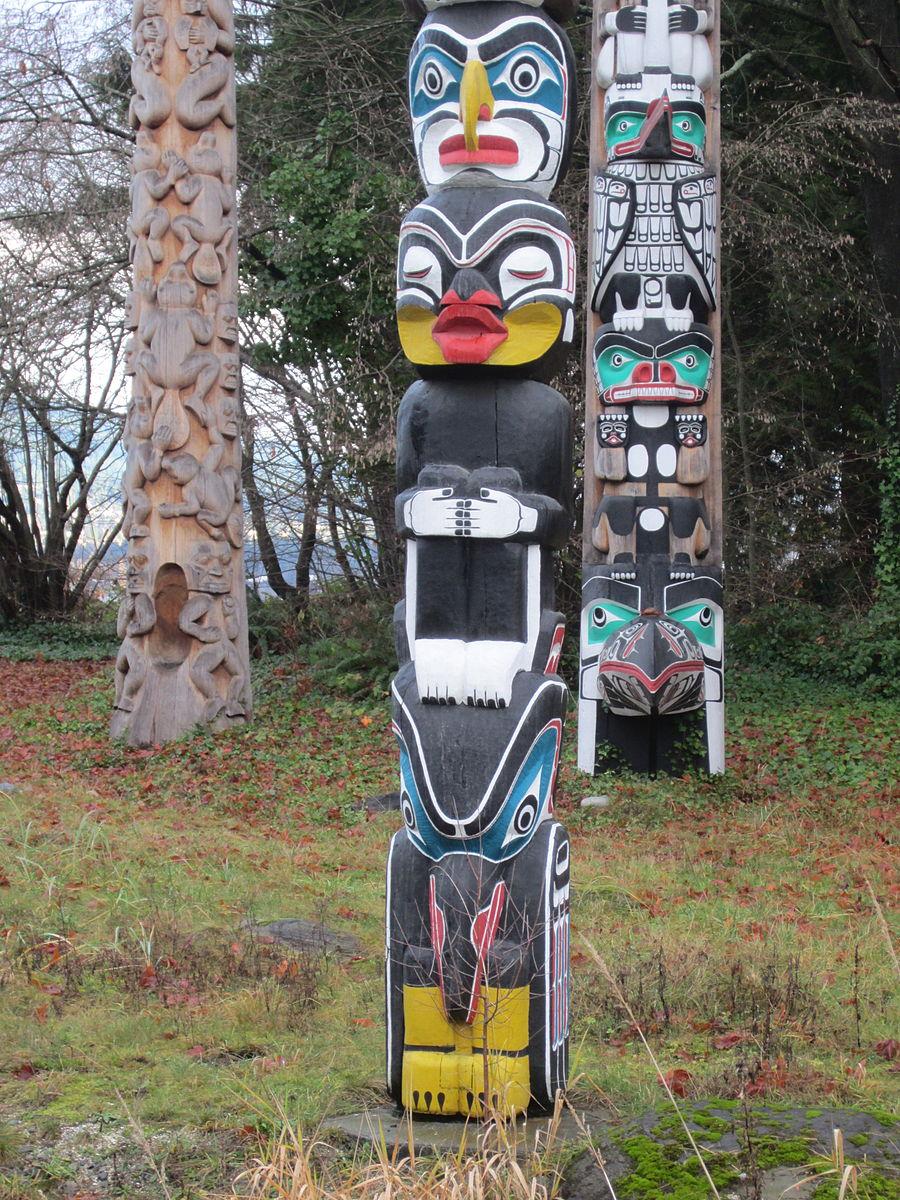
Gaston Lachaise (1882-1935) was an American sculptor in the early modernist period of the 20th century. Educated in his native France, he fell in love with a woman, followed her to the United States, and adoringly used that love to define his concepts of a female statue. Created in 1932 out of bronze, the sculpture Standing Woman (13.33), is a voluptuous nude woman who became his signature piece. Influenced in American values by his wife, he redefined the female nude into an influential figure and pushed the boundaries, innovating the definition of the female body. Her right foot steps out, the hip forward in traditional contrapposto stance with her hands on her hips, commanding the space. Floating Figure(13.34) also portrays the strength of the figure, sitting at ease with her legs crossed, her hand gesturing as though proving her thoughts.
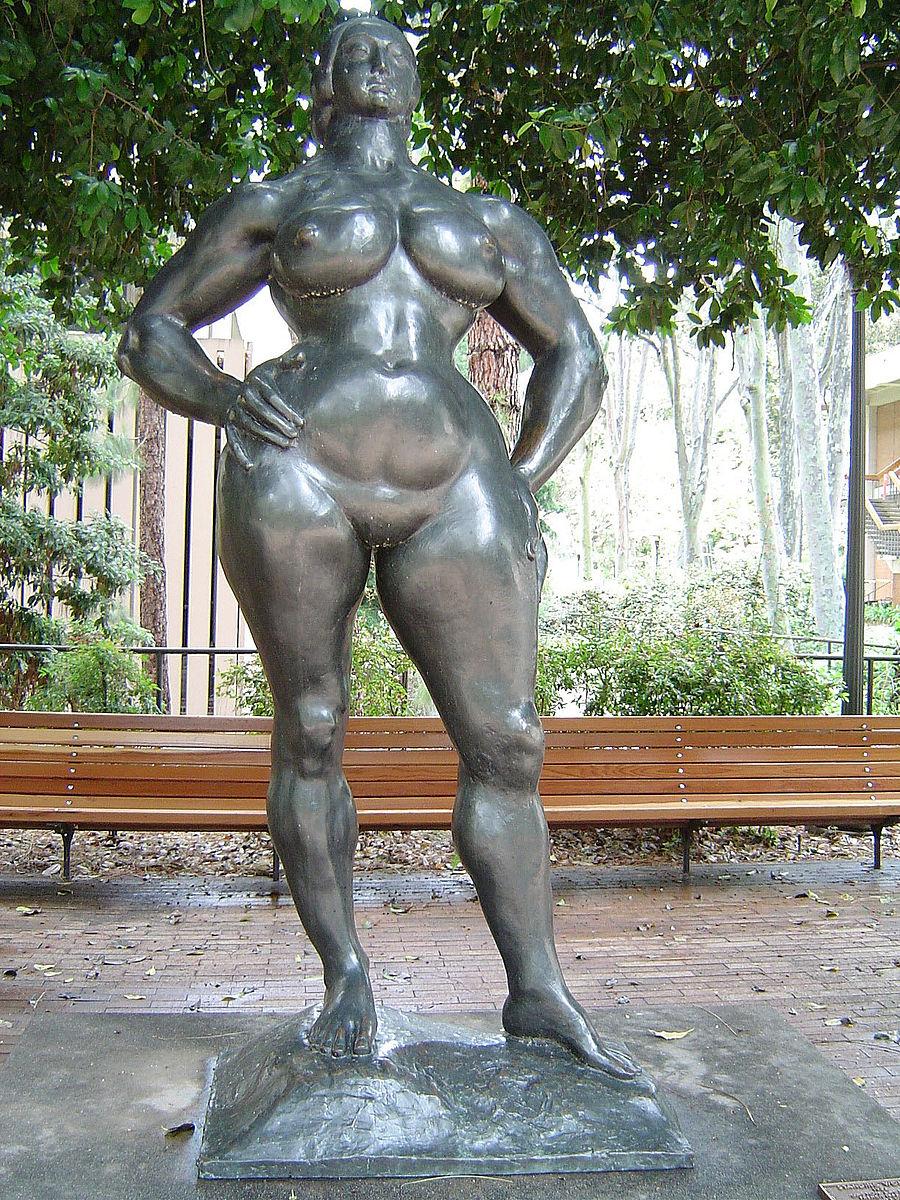

Isamu Noguchi (1904 –1988) was a prominent Japanese-American artist who began his career sculpting busts, then turned to abstract art in the 1930s before he was voluntarily interned at the Poston Camp in 1942 — continuing his designs and drawings while in the camp he returned to New York City after the war. The Red Cube (13.35) is a three-dimensional parallelogram, not a cube. The cube is made of steel and designed to collaborate with the horizontal and vertical definition of the surrounding buildings, the cube sited on the diagonal, appearing to be rolling. Zwillingsplastik (13.36) is made in two parts, the small part that seems to support the more significant section, the missing area equaling the smaller part, giving the sculpture a floating feeling.
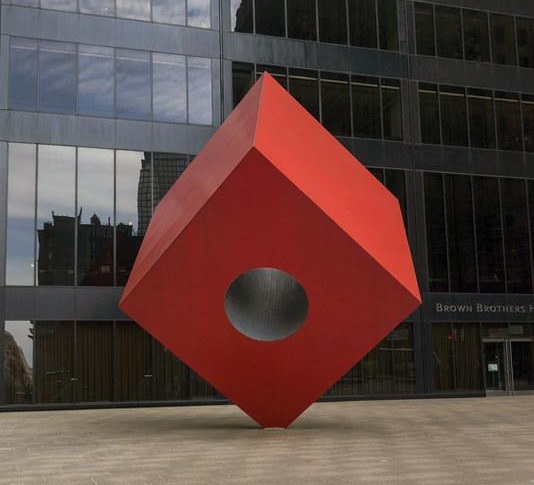
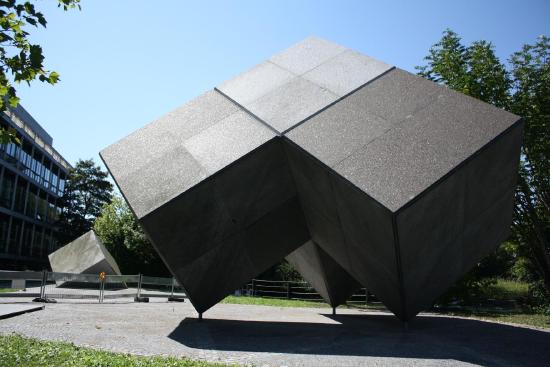
George Segal (1924 – 2000) was an American painter and sculptor associated with the Pop Art movement. Segal is best known for his life-size sculptures cast from plaster bandages. Segal would wrap a model in plaster, remove the hardened forms, and put them back together to form a hollow impression of the model. Using the rough texture of the plaster bandages to his advantage, he would cast the final form in bronze.
Segal did not place his figures on pedestals or in the center of a square, and he placed them in real-life situations demonstrated in Depression Bread Line (13.37). The men's clothing and their posture indicate their dire situations while waiting in line for bread. He cast the bronze statues from plaster to give a worn look to the men's clothes, enhancing the look of destitution. The Holocaust Memorial (13.38) in San Francisco, the corpses strewn on the ground, the one emaciated survivor standing at the fence. Segal created the sculpture in bronze patinated in white, adding to the impact of the scene.
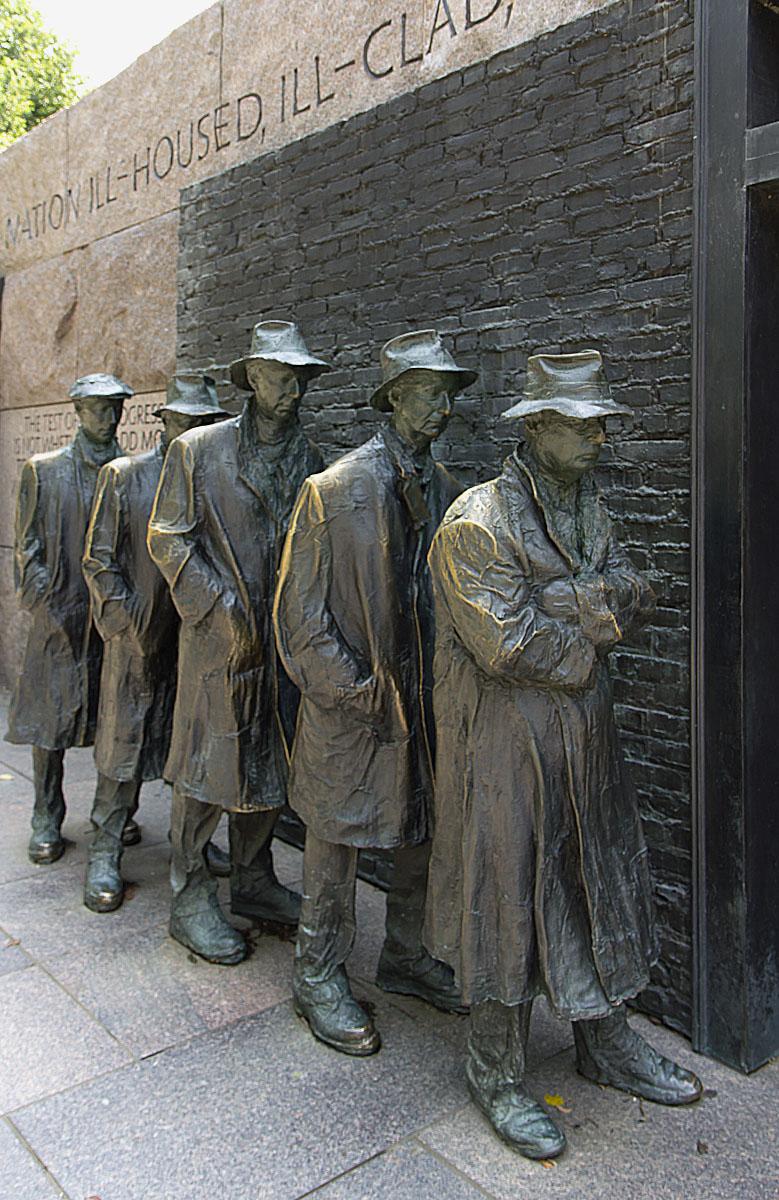
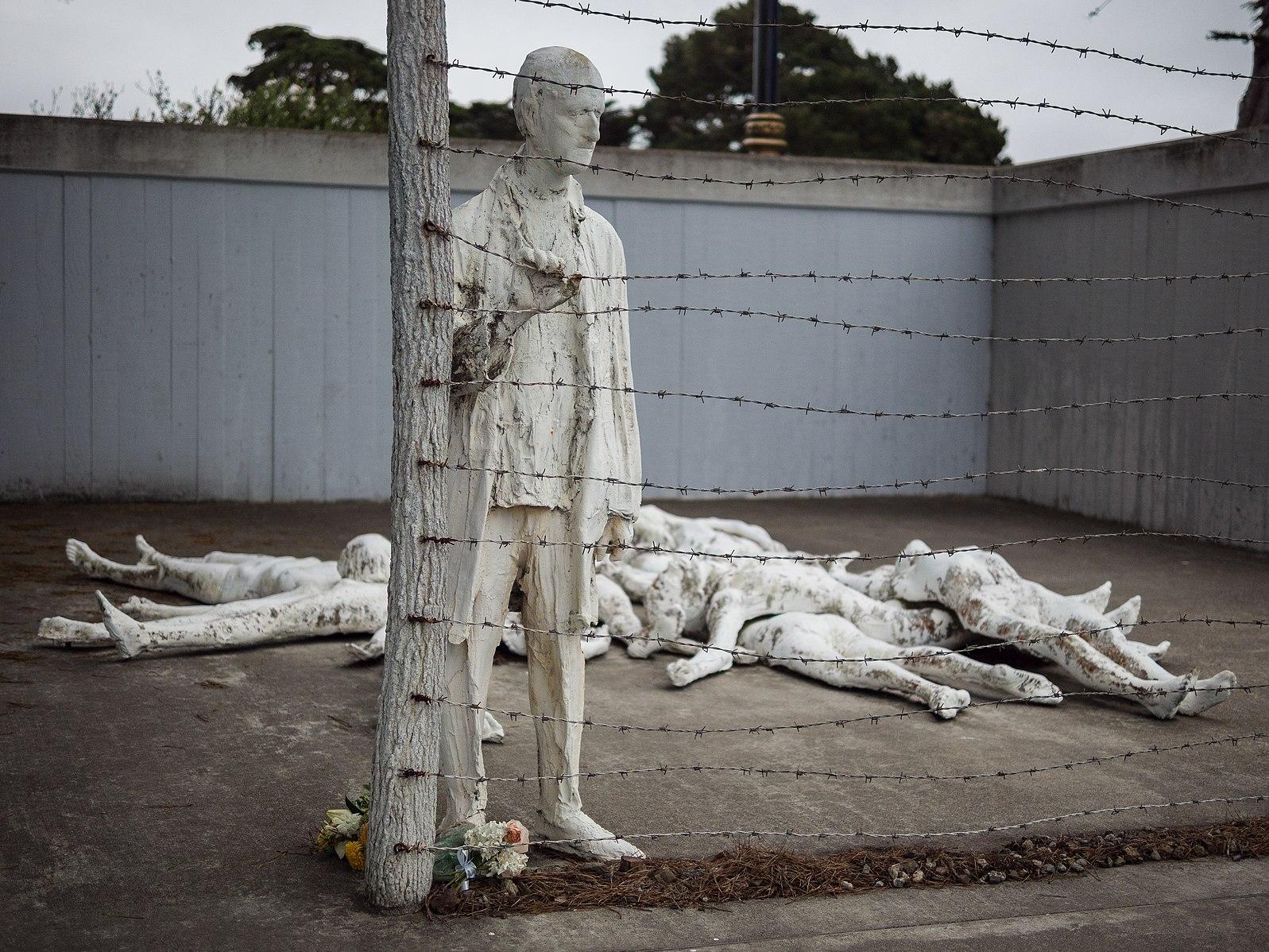
Modern sculptures demonstrate our need to understand the world, especially in the complex modern and ever-changing world, and Käthe Kollwitz (1867 - 1945), a German artist, created a body of work portraying eloquent, yet complex accounts of human life, especially about the tragedy of war. Using multiple mediums, including etching, woodcut, drawing, painting, and sculpting, she reproduced the emotions of war.
The death of Kollwitz’s son drove her to create the memorial Mother with Her Dead Son (13.39) for him. Similar to the Pieta, Kollwitz positioned her son lying between her knees while she cradled his body. Her face shows a reflection of her pain, the loss of her son in the war. The statue is positioned in the center of a large room (13.40) creating a feeling of isolation which only enhanced the emotions of suffering and sadness. The bronze memorial is a tribute to all the victims of war and tyranny.
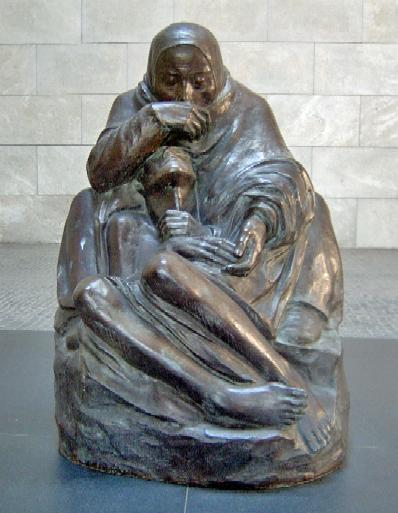

Elizabeth Catlett (1915-2012) was an American artist who knew from an early age she wanted to be an artist, attending Howard University. She also lived in Mexico and was influenced by the art of Rivera and Kahlo and created abstract prints and sculptures focusing on the experiences of minority women who toiled in difficult, low paying jobs. Her sculptures were formed into busts and standing figures, including those of Mahalia Jackson (13.41) and Stepping Out(13.42), the woman ready to step out for the evening.
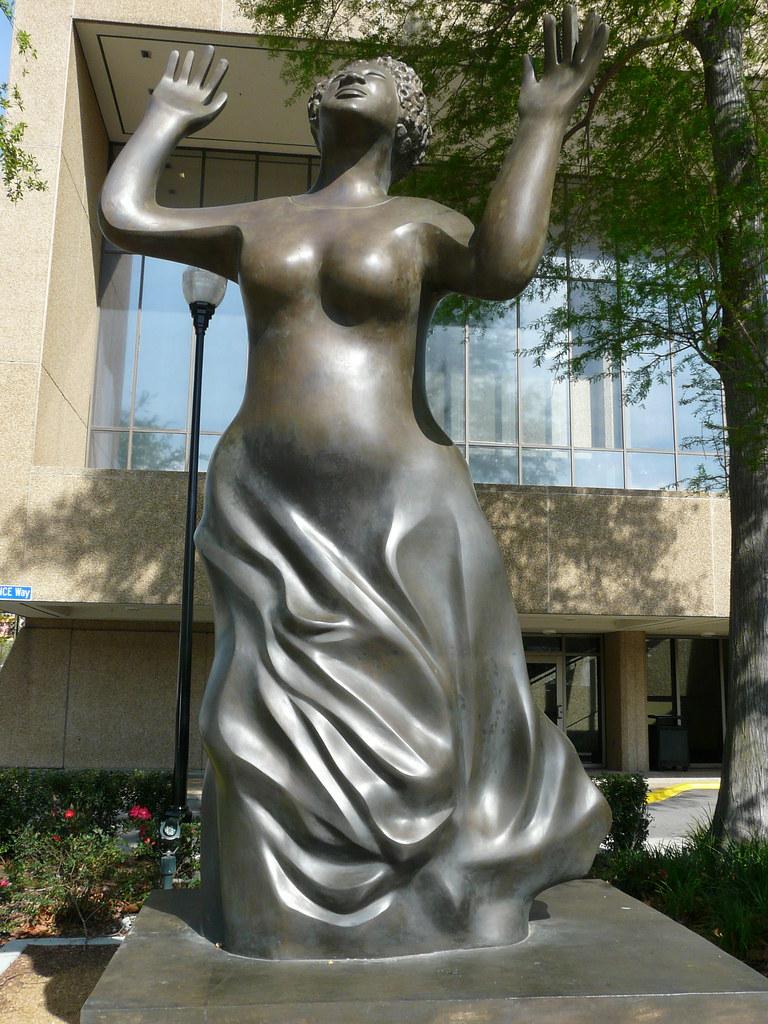
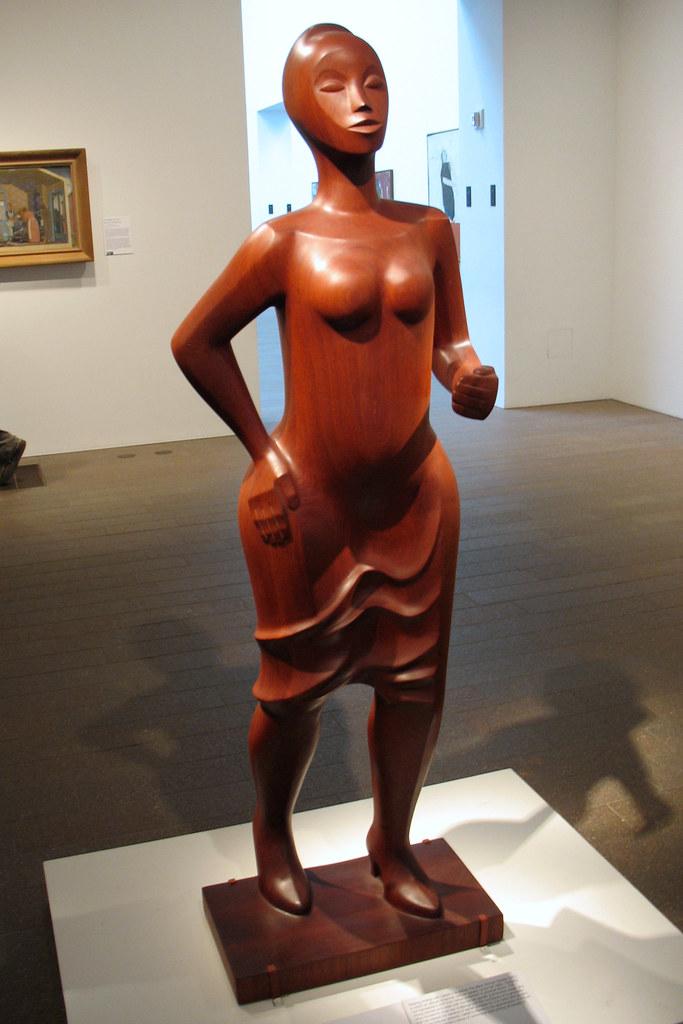
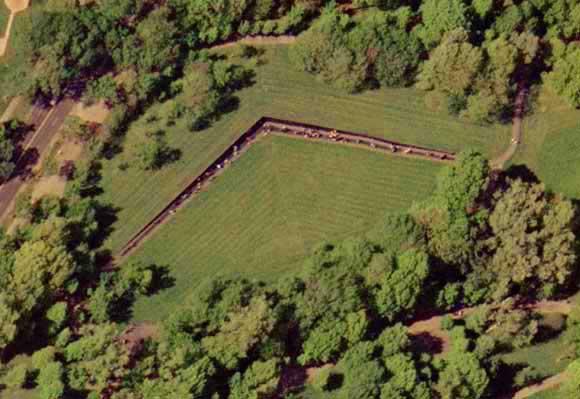
Maya Lin (born 1959) was a university student studying architecture when she submitted her design for a nationwide competition for concepts of a new memorial to Vietnam veterans. Her design was very unusual and unlike the general tradition of memorial tributes. She proposed to build a V-shaped wall of granite, with the names of every soldier who was killed or still missing, inscribed in the wall. The wall sloped below ground level (13.43) as viewed from the air, the long walkway along the highly polished wall (13.44). The new, controversial wall, has become an accepted and essential tribute to the veterans of the contentious war, attended by many to visit a fallen soldier (13.45), lay flowers or hang flags. The wall designed by Lin became a model for new and unusual memorials and sculptures. The Civil Rights Memorial (13.46) in Alabama was also designed by Lin using the deep, dark granite and inscribing the tributes into the sides.



Louise Bourgeois (1911-2010) was born in Paris and learned drawing by helping in her parents' tapestry business. When she married and moved to New York, she initially focused on painting and prints before working with sculptures. One of her significant themes for sculptures was the spider (13.47). She sculpted multiple sizes of spiders from immense outdoor images to small intimate statues, all using different materials. She considered spiders to be fierce yet fragile in design and the fragility is reflected in the irregular, thin legs of the spider sculptures, standing awkwardly in position.
